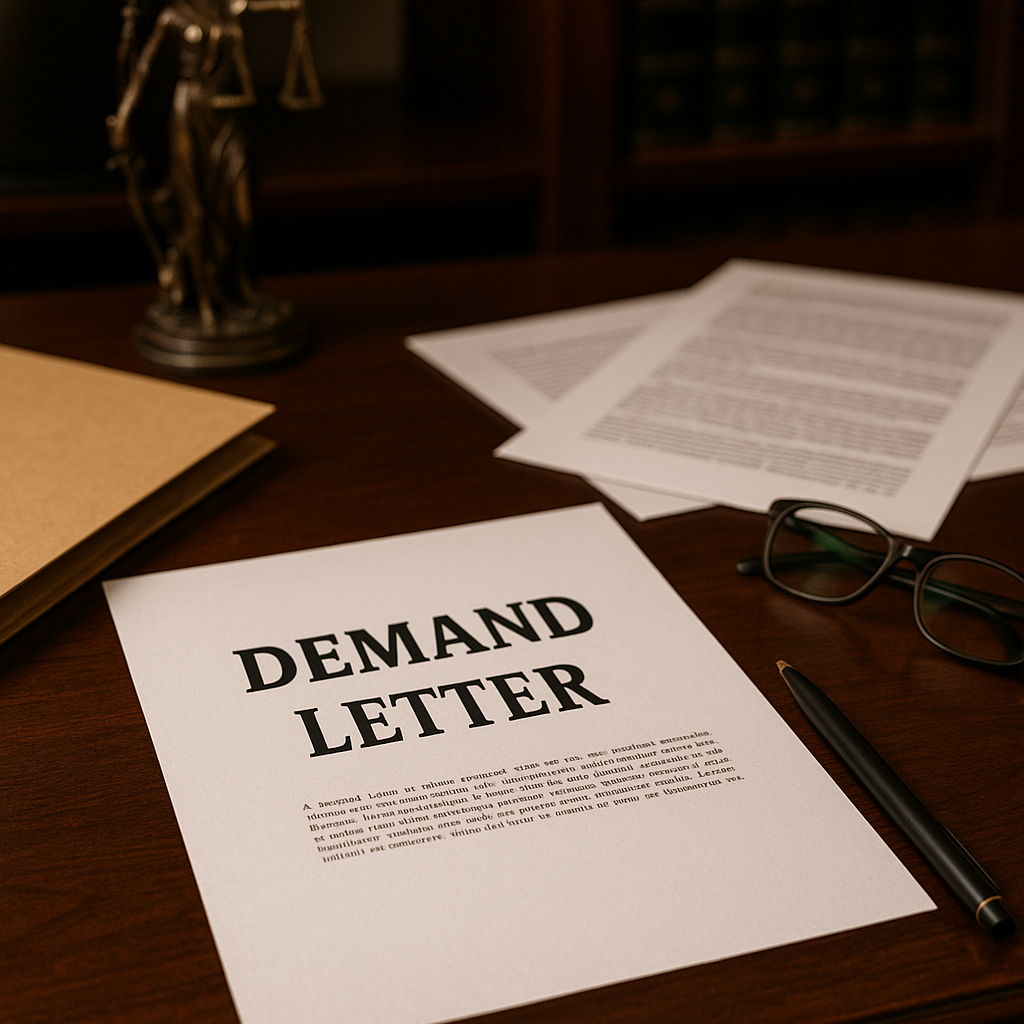When a legal dispute arises, emotions can run high and the future may seem uncertain. But before heading straight into a courtroom, one powerful and cost-effective tool can help resolve issues early: the demand letter. It’s often the first formal step in asserting your rights—and it can be highly effective in initiating settlement discussions.
What Is a Demand Letter?
A demand letter is a formal written communication—usually drafted by an attorney—sent to a person or business outlining a legal claim and requesting a specific remedy, such as payment, damages, or corrective action. The letter serves two critical purposes:
- Notifies the recipient of the legal claim.
- Invites early resolution without the need for litigation.
Although not required in every situation, demand letters are often a prelude to lawsuits. When drafted skillfully, they can open the door to meaningful negotiations and even lead to a full settlement before a case ever reaches court.
Why Demand Letters Matter
A well-written demand letter does more than simply make a request—it:
- Establishes a clear legal position: It communicates the facts, the legal grounds for the claim, and what the client is seeking.
- Demonstrates seriousness: It signals that the sender is prepared to enforce their rights, including litigation if necessary.
- Encourages settlement: It provides an opportunity for the recipient to resolve the matter voluntarily, often saving both sides time, money, and uncertainty.
In some cases, courts may even consider whether a party attempted informal resolution through a demand letter before litigation, which can impact outcomes related to attorney’s fees or damages.
What Should Be Included in an Effective Demand Letter?
The strength of a demand letter lies in its clarity, tone, and legal substance. While each letter should be tailored to the specific facts and jurisdiction, effective demand letters typically include:
1. Factual Summary
A concise but accurate account of the events giving rise to the claim. It should establish a clear timeline and provide enough context to show why the recipient is legally liable.
2. Legal Basis
A statement of the legal claims being asserted. This includes relevant statutes, case law, or contract provisions that support the claim.
3. Demand for Relief
A clear and specific statement of what the sender is requesting (e.g., a monetary amount, a corrective action, or a response by a deadline).
4. Supporting Evidence
While not every piece of evidence must be disclosed, referencing documentation such as contracts, invoices, or communications can strengthen the letter’s credibility.
5. Deadline for Response
A firm deadline (typically 10–14 days) communicates urgency and allows the recipient to respond meaningfully.
6. Consequences of Non-Compliance
A statement that the sender may pursue legal action if the demand is not met—without sounding overly aggressive or unprofessional.
The Value of Professional Drafting
Demand letters are not just formalities—they are strategic tools. Poorly written letters may be ignored or even used against the sender in later litigation. On the other hand, professionally drafted demand letters:
- Project seriousness and credibility.
- Demonstrate command of the legal issues.
- Maintain a tone that is firm but not inflammatory.
They also show respect for the process and can build goodwill—even when the underlying dispute is contentious.
Conclusion
If you are facing a legal dispute—whether involving a contract, unpaid debt, injury, or another matter—consulting an attorney about a demand letter may be the best first step. At The Woodlands Law Firm, PLLC, we understand the importance of presenting your case with clarity, professionalism, and strength. An effective demand letter may be all it takes to protect your rights and resolve your issue quickly.

Leave a Reply